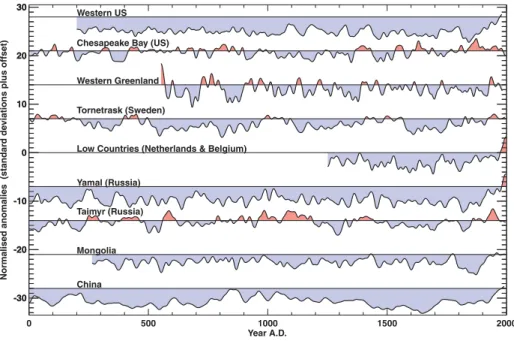forum A AGU
Volltext
Abbildung
![Fig. 1. Comparison of proxy-based NH temperature reconstructions [Jones et al., 1998; Mann et al., 1999; Crowley and Lowery, 2000] with model simulations of NH mean temperature changes over the past millennium based on estimated radiative forcing histories](https://thumb-eu.123doks.com/thumbv2/1library_info/3983432.1539120/2.918.337.851.66.399/comparison-temperature-reconstructions-simulations-temperature-millennium-estimated-radiative.webp)

ÄHNLICHE DOKUMENTE
Für die schnellen Acetylierer war im Vergleich mit den langsamen Acetylierern das re- lative Risiko, an einem Mammakarzinom zu erkranken, auch unter der Voraussetzung nicht
TABLE 1 Average and maximum C stocks in living and dead volumes for forest registered as managed and unmanaged in Germany, based on plot data from the national forest
European Journal of Taxonomy 374: 1–23 2017 area, rectangular pseudoloculi replaced by 1–2 small, rounded ones whereas near the apices, central transapically elongated
is illustrated and discussed based on populations collected from the Vouga, Mondego and Lis river basins in central Portugal and compared with the type material of Fragilaria
(2009) Predic- tors of spontaneous and systematically assessed suicidal adverse events in the treatment of SSRI-resistant depression in adolescents (TORDIA) study..
The pure α-bisabolol β-d-fucopyranoside (5) showed significantly higher antimicrobial and cy- totoxic activity than the previously studied diethyl ether fraction of the methanol
The data shows that compound 5a obtained from 5 by treatment with bromine in acetic acid and then the anhydride acid in pyridine is olean-2α,2β-diacetyl-12α-bromo-13,28-lactone,
This work has been digitalized and published in 2013 by Verlag Zeitschrift für Naturforschung in cooperation with the Max Planck Society for the Advancement of Science under